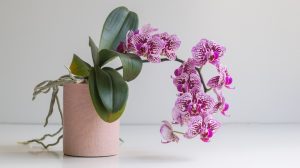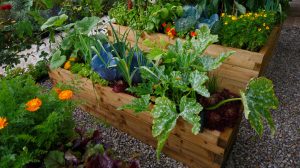The Brilliant Blue Dwarf Agapanthus, also known as the Blue-Purple Bicolor Dwarf African Lily of the Nile, is a stunning flowering plant that is native to the southern regions of Africa. This particular agapanthus hybrid, known as Agapanthus campanulatus var patens F2 hybrid Brilliant Blue PP25966, is a smaller and more compact version of its taller counterparts.
With its vibrant blue and purple bicolor flower clusters, this dwarf agapanthus is a true charmer. It can be grown in both northern and southern regions, as it is deciduous and can tolerate cooler temperatures.
This species of agapanthus is known for its low maintenance and effective pest and disease resistance. Its attractive foliage, atop tall slender stems, adds to its overall appeal. The Brilliant Blue Dwarf Agapanthus is often used in perennial borders, as a groundcover, or in groups for a bold and colorful statement in the garden.
When planting these bulbs, it is important to choose a location with fertile, well-drained soil and ample sunlight. They thrive in full sun to light shade and require regular watering, especially during dry spells. Propagate these agapanthus hybrids in the spring or early summer by dividing the clumps or by planting seeds. Feeding the plants with a balanced fertilizer will help promote healthy growth and flowering.
“The Brilliant Blue Dwarf Agapanthus is a beautiful addition to any garden. Its dazzling blue-purple blooms and compact size make it a standout among other agapanthus varieties. Its resistance to pests and diseases, along with its low maintenance requirements, make it a favorite among gardeners of all skill levels. Whether used as a focal point, a border planting, or even in containers, this dwarf agapanthus is sure to impress.”
So, if you’re looking for a flowering plant that is both stunning and easy to care for, the Brilliant Blue Dwarf Agapanthus is the right choice. Its unique color combination, striking flower clusters, and versatile uses make it a popular and highly sought after plant.
Agapanthus ‘Galaxy Blue’ – LILY OF THE NILE ‘GALAXY BLUE’
The Agapanthus ‘Galaxy Blue’ is a charming variety of the perennial Lily-of-the-Nile. It features clusters of deep blue flowers that bloom atop tall, slender stalks. This variety is a bicolor hybrid, with blue-purple flowers and dark green foliage.
The Agapanthus ‘Galaxy Blue’ can be grown in both the northern and southern regions, as it is tolerant of a wide range of temperatures. It is evergreen in warmer climates, but the foliage may die back in colder regions. However, the plant will regrow in the spring.
This variety is known for its compact growth habit, making it perfect for smaller garden spaces. It can also be grown in containers, and will thrive indoors if provided with enough light and regular watering.
When planting ‘Galaxy Blue’, make sure to choose a spot with full sun to partial shade. It prefers well-drained soil and should be watered every few days during the growing season. Fertilize every two to three weeks with a balanced fertilizer to promote healthy growth and abundant blooms.
The ‘Galaxy Blue’ is a popular choice among gardeners, as it is not only beautiful but also low-maintenance. It is relatively pest-free and can be grown alongside other perennials and shrubs to create an effective and eye-catching display. It is also an excellent choice for cut flower arrangements.
With its stunning blue flowers and compact growth habit, the Agapanthus ‘Galaxy Blue’ is a must-have for any garden. Whether grown in the ground or in a pot, this charming Lily-of-the-Nile will add a touch of elegance to any outdoor space.
‘Brilliant Blue Dwarf’ Agapanthus – Blue-Purple Bicolor Dwarf African Lily of the Nile Agapanthus campanulatus var patens F2 hybrid ‘Brilliant Blue’ PP25966
The ‘Brilliant Blue Dwarf’ Agapanthus is a stunning variety of the African Lily of the Nile, Agapanthus campanulatus var patens F2 hybrid. This particular variety features beautiful blue-purple bicolor flowers that are highly effective in adding vibrant color to any garden.
When grown in full sunlight, the ‘Brilliant Blue Dwarf’ Agapanthus produces bold clusters of deep blue-purple flowers, making it a standout addition to any garden. It is a compact dwarf variety, growing to a height of only 18-24 inches, making it ideal for smaller garden spaces or as a border plant.
The ‘Brilliant Blue Dwarf’ Agapanthus is relatively low-maintenance and is resistant to most pests. Regular watering, particularly during dry spells, and feeding with a balanced fertilizer will ensure healthy growth and abundant flowering. This hybrid variety’s foliage remains evergreen throughout the year, adding a touch of color even when not in bloom.
For those with sensitive skin, it is worth noting that Agapanthus plants can be potentially irritating, so wearing gloves while handling or grooming the plants is recommended. Additionally, the ‘Brilliant Blue Dwarf’ Agapanthus is a hardy plant that can withstand colder temperatures, making it suitable for planting in USDA hardiness zones 7 to 11.
The ‘Brilliant Blue Dwarf’ Agapanthus is a relatively new variety, with its debut in the gardening world. Its beautiful bicolor flowers and compact growth habit make it a popular choice among gardeners. The ‘Brilliant Blue’ PP25966 is the patented protected variety name of this hybrid Agapanthus, ensuring its unique characteristics are preserved.
In conclusion, the ‘Brilliant Blue Dwarf’ Agapanthus is a captivating and low-maintenance plant that brings color and texture to any garden. Its stunning blue-purple bicolor flowers, compact growth habit, and resistance to pests make it an excellent choice for gardeners of all skill levels. Whether planted as a standalone feature or used in clusters, this African Lily of the Nile hybrid is sure to add a touch of brilliance to any outdoor space.
How To Plant Agapanthus And Agapanthus Care
Agapanthus, also known as Lily of the Nile, is a bold and eye-catching plant that can add a touch of vibrant color to your garden. Here are some steps to help you successfully plant and care for this beautiful flower:
Planting Agapanthus
Choose a location with well-draining soil that receives full sun or light shade. Agapanthus can tolerate a wide range of soil types, but they prefer a deep and fertile soil. Dig a hole that is twice the size of the root ball and place the plant in the hole, ensuring that the top of the root ball is level with the soil surface. Backfill the hole with soil and firm it gently around the plant. Water the plant thoroughly after planting.
Caring for Agapanthus
Agapanthus is a low-maintenance plant that requires minimal care. Water the plants regularly, especially during dry spells. Agapanthus prefers to be kept slightly moist, but be careful not to overwater as this can lead to root rot. Fertilize the plants once a year in early spring with a balanced fertilizer to promote healthy growth and flower production.
Agapanthus is a deciduous plant in colder regions, but in the southern parts of the United States, it remains evergreen throughout the year. If you live in a colder climate, cover the plants with a layer of mulch in late fall to protect them from freezing temperatures.
Transplanting Agapanthus can be done in early spring when the plants are dormant. Carefully dig up the clump and divide it into smaller groups of plants, each with its own stalk and roots. Replant the divisions in a new location and water them thoroughly.
Agapanthus is relatively pest and disease-resistant. However, keep an eye out for pests such as aphids and spider mites. If you notice any signs of pests, treat the plants with an appropriate insecticide or pesticide.
In mid-summer, the plants will start producing beautiful blue-purple bicolor flowers. Deadhead the spent flower heads to encourage continuous flowering. Agapanthus can be grown in groups or as individual specimens, making it a versatile plant for any garden.
Propagation
Agapanthus can be propagated through division or by seeds. Division is the most common and easiest method. Simply dig up the plant, divide the clump into smaller groups, and replant them in a new location. Seeds can also be collected from the dried flower heads and sown in pots. Keep the pots in a warm and sunny location and water them regularly.
Agapanthus campanulatus var. patens F2 hybrid Brilliant Blue PP25966, commonly known as the dwarf Agapanthus, is a smaller and more compact variety of the plant. It features bold blue-purple bicolor flowers and attractive foliage. This makes it an ideal choice for those who have limited space or want to create eye-catching displays in their gardens.
Overall, agapanthus is a beautiful and low-maintenance plant that can thrive in a wide range of conditions. With the right planting and care, these plants will reward you with stunning flowers year after year.
How to Plant Agapanthus
Agapanthus, also known as Lily-of-the-Nile, is a widely grown variety of plants that are known for their bold and eye-catching blue-purple bicolor flowers. They are effective in adding a splash of color to any garden or landscape.
When planting agapanthus, it is important to choose the right spot. They prefer a sunny location with well-draining soil. Agapanthus can also be grown indoors in pots, making them a versatile plant for any gardener.
Here are the steps to plant agapanthus:
- Choose a suitable spot in your garden or a pot indoors.
- Prepare the soil by adding compost or well-rotted manure to improve its fertility.
- Dig a hole that is about twice the size of the agapanthus bulb or plant.
- If transplanting, carefully remove the agapanthus from its original spot and divide the bulbs if necessary.
- Place the agapanthus in the hole, making sure the crown of the plant is level with the soil surface.
- Backfill the hole with soil and gently firm it around the plant.
- Water the plant thoroughly after planting and continue to water regularly, especially during dry spells.
- Feed the agapanthus with a balanced fertilizer according to the package instructions to promote healthy growth.
- Keep the area around the agapanthus weed-free to reduce competition for nutrients.
- Groom the plant by removing faded flowers or dead leaves to maintain its neat appearance.
- In cooler northern climates, agapanthus may need some winter protection, such as mulching or moving potted plants indoors.
- Agapanthus can be propagated by dividing existing plants or by sowing seeds. This can be done in early spring or early fall.
Agapanthus hybrids, such as the ‘Brilliant Blue Dwarf’ or the ‘Galaxy Midknight’, are particularly popular for their compact size and stunning color combinations. These varieties can be used in borders, containers, or as a focal point in the garden.
While agapanthus plants are generally hardy, they are not without their pests and diseases. Gardeners should be on the lookout for common problems like aphids, slugs, and snails. Taking good care of the plants and providing the right growing conditions can help prevent these issues.
The Lily-of-the-Nile agapanthus variety is a must-have for every garden or landscape. Its bold and vibrant flowers, easy propagation, and wide range of uses make it a favorite among gardeners. Whether grown in the south or north, agapanthus will surely make a statement in any setting.



